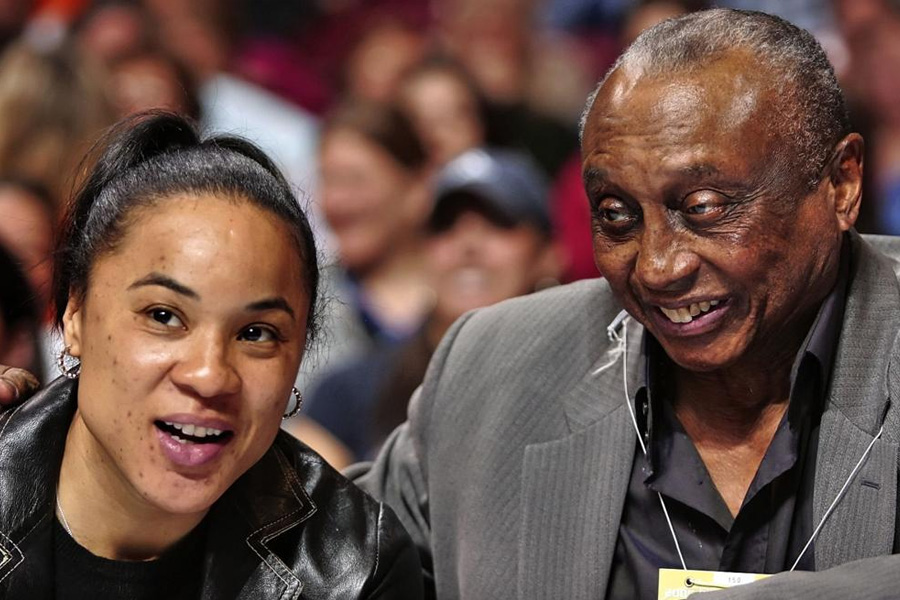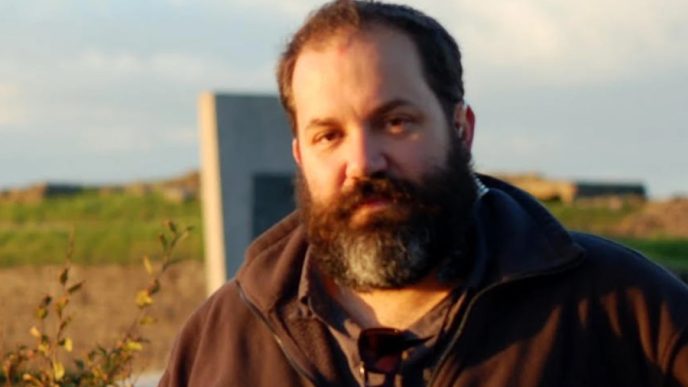Basic Information
| Field | Details |
|---|---|
| Full Name | Estelle Staley |
| Also Known As | “Mrs. Staley” (in local coverage) |
| Birth | January 5, 1943 |
| Death | August 10, 2017 |
| Spouse | Clarence Staley |
| Children | Lawrence (“Nena”), Anthony, Tracey (Underwood), Eric, Dawn |
| Grandchildren / Great-grandchildren | Nine grandchildren; two great-grandchildren |
| Associated Places | Orangeburg County, SC; North Philadelphia, PA; Columbia, SC |
| Occupation | Homemaker; family matriarch |
| Notable For | Mother of Dawn Staley; shaping a resilient, close-knit family |
| Health in Later Years | Alzheimer’s disease |
Roots and Migration
Estelle Staley’s story begins in South Carolina and bends northward with the postwar currents of possibility. As a teenager in the 1950s, she and her husband, Clarence, moved from Orangeburg County to North Philadelphia. They joined the great stream of Black families who left the rural South in search of work, schools, and the promise of city life. In a few suitcases and a shared resolve, they carried the values that would become the architecture of their home: faith, discipline, humility, and a relentless devotion to family.
The couple settled in North Philadelphia’s Raymond Rosen Homes, where neighbors kept watch and stoops doubled as after‑school commons. Estelle, with a homemaker’s hands and a coach’s eye for detail, built rhythm into the household—morning chores, schoolwork first, dinner together. It wasn’t glamorous, but it was steady—like a lighthouse steady—through years when paychecks were thin and the city could be unkind.
A Home Built on Discipline and Love (1960s–1970s)
Estelle and Clarence raised five children—Lawrence, Anthony, Tracey, Eric, and the youngest, Dawn—across the 1960s and 1970s. The apartment was tight, but expectations were spacious. Respect your elders. Look out for your siblings. Keep your word. In that compact living room, rules weren’t barked; they were lived. Estelle’s way was to teach by example: early rising, cooking on a budget, and making sure the bills—however stubborn—got paid.
In this crucible, the children learned the grammar of resilience. Their mother’s voice could be stern, but it was never brittle. She corrected behavior without cracking spirits. And when the day’s noise dimmed, she offered warmth—the blanket just right, the meal passed first to a child, the small kindnesses that accumulate like compound interest and shape character.
The Five Children
The Staley household became a training ground for grit and grace. Each child found a lane, and each lane led back to their mother’s example.
| Child | Note (as publicly known) |
|---|---|
| Lawrence (“Nena”) | Son; publicly referenced within family stories and as a supportive presence during sister Tracey’s health battle. |
| Anthony | Son; mentioned in biographical accounts as a brother whose loss weighed heavily on the family. |
| Tracey (Underwood) | Daughter; faced leukemia; her treatment and bone‑marrow transplant drew the family closer than ever. |
| Eric | Son; named in family remembrances and obituary notices. |
| Dawn | Daughter; an elite point guard turned championship coach; her achievements often framed by her mother’s influence. |
The youngest, Dawn, would carry Estelle’s lessons onto the biggest stages in basketball—Olympic rosters, professional ranks, and championship sidelines. But within the family, the spotlight was never singular. There were birthdays to remember, school nights to manage, and health scares that reshaped entire seasons of life. Through it all, Estelle stayed in the huddle.
Trials and Resilience (1990s–2010s)
The Staley family’s story is not just ascent; it is endurance. When Tracey confronted leukemia, the family mobilized—prayers, hospital rotations, donor testing. The language of sacrifice, taught in childhood, became the language of care: show up, give what you can, keep showing up. Later, Estelle herself would face the slow erasures of Alzheimer’s disease. Even as memory thinned, the muscle memory of motherhood persisted—her hands still reaching, her eyes still searching for the contours of the family she had shaped.
These years emphasized what had always been true: the Staleys were, at core, a unit. The triumphs—trophies, titles, televised moments—were shared. So were the losses. And when Estelle moved to Columbia, South Carolina, in her later years, the circle tightened again around her.
Later Years in South Carolina
By the 2010s, Columbia felt like a second home base, a place where Estelle could be close to her children and receive daily care. Family stories from this period have a quiet tenderness: shared meals, small outings, laughter when the weather cooperated, and the steady cadence of caretaking in between. Even diminished by Alzheimer’s, Estelle remained the moral center—proof that love can speak without words.
On August 10, 2017, Estelle passed away. Her funeral drew family, friends, and neighbors who had known her variously as a sister, aunt, mother, grandmother, and the woman who kept a household together on hope and hard work. The date is a marker on a calendar; the impact is measured in lives shaped and lives uplifted.
Family at a Glance
Estelle’s reach within her family extended across generations and branches.
- Spouse: Clarence Staley
- Children (5): Lawrence (“Nena”), Anthony, Tracey (Underwood), Eric, Dawn
- Grandchildren: 9
- Great‑grandchildren: 2
- Estelle’s siblings (as listed in family notices): brothers Aaron, Carl, Charles, Dennis, Elijah, Hercule; sisters Patricia, Margaret, Marylee, and Verneatha
The names alone feel like a gathering—roll call for a clan that stretched from South Carolina churches to Philadelphia playgrounds and back again, tracing the arc of a distinctly American family journey.
What Shaped Her, What She Shaped
Estelle’s work was not an occupation with a resume line; it was a vocation that saturated every room of her home. She practiced the economy of care: turn one pot into two meals; turn one paycheck into essentials; turn one lesson into a lifetime of good habits. She did not hold a public office, but she governed a household with justice and mercy. She did not run a business, but she managed resources with the precision of a quartermaster.
Her influence is visible in the disciplined joy of her children—particularly in Dawn’s poised competitiveness. The drills, the curfews, the hard talks about doing the right thing even when no one is watching—these became on‑court virtues: defense without excuses, preparation without shortcuts, leadership that is both demanding and protective. In that sense, every championship echo carries a trace of Estelle’s voice.
Timeline of Key Milestones
| Date | Milestone |
|---|---|
| January 5, 1943 | Birth of Estelle Staley |
| 1950s | Moves from Orangeburg County, SC, to North Philadelphia with Clarence |
| 1960s–1970s | Raises five children in the Raymond Rosen Homes |
| May 4, 1970 | Birth of youngest child, Dawn |
| 2010s | Resides in Columbia, SC; family supports Estelle through Alzheimer’s |
| August 10, 2017 | Estelle passes away; services held in the Columbia area |
| 2018–present | Estelle frequently remembered in family stories and public reflections |
The Measure of a Matriarch
There is a particular power in being consistent, and Estelle wielded it quietly and effectively. Her family learned to meet challenges as if they were full‑court presses—move the ball, trust your teammate, keep your head up. She did not seek monuments; she built people. That is the kind of influence that outlives dates and addresses, the kind that threads through conversations at reunions and surfaces when a grandchild makes a hard choice and chooses well.
FAQ
Who was Estelle Staley?
She was a South Carolina–born homemaker and the matriarch of the Staley family, best known publicly as the mother of coach Dawn Staley.
When was she born and when did she pass away?
She was born on January 5, 1943, and passed away on August 10, 2017.
Where did she live during her life?
She grew up in South Carolina, raised her children in North Philadelphia, and lived in Columbia, South Carolina, in later years.
Who was her spouse?
Her husband was Clarence Staley.
How many children did she have?
She had five children: Lawrence (“Nena”), Anthony, Tracey (Underwood), Eric, and Dawn.
What was she known for within her family?
Discipline, devotion, and an unshakeable commitment to raising strong, loving, and resilient children.
Did she have a public-facing career?
No; she was primarily a homemaker whose influence is reflected through her family.
What health challenges did she face?
She battled Alzheimer’s disease in her later years.
How is she connected to sports?
Her youngest child, Dawn Staley, became a Hall‑of‑Fame basketball player and championship-winning coach.
Is there public information about her personal finances?
No; there are no credible public estimates or records of her private finances.














